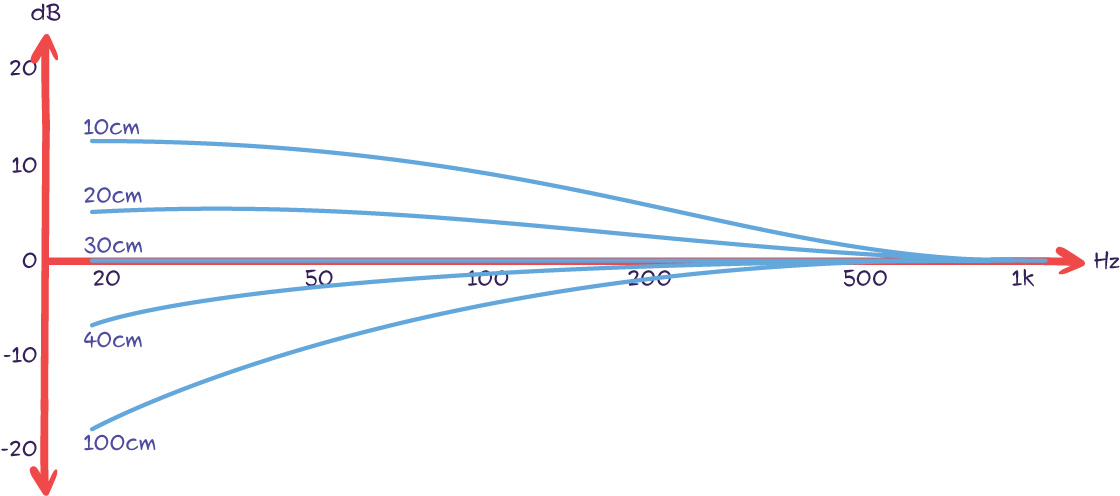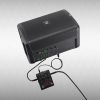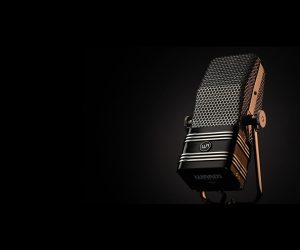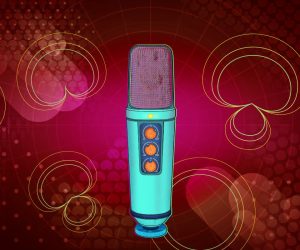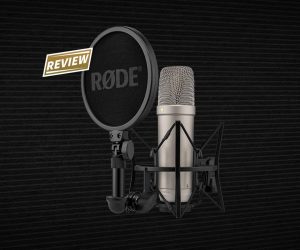
Microphones: An Introduction
Greg Simmons looks at the influence of the microphone on the tonality of the captured sound, and delves deep into microphone technology to find out what makes them sound like they do. In this first instalment of the series he gets some basics out of the way...
There’s a common misconception among people starting out in audio that the microphone is some kind of magic stick that you point at the sound source and do the rest of the work with knobs, buttons and luck. Nothing could be further from the truth! The reality is that your choice of microphone has a far greater influence on the captured sound than your choice of preamp, converter, interface or recording medium – assuming those things are all working properly. As you will see from this on-going series, choosing and placing your microphones strategically results in better sound, faster.
CONFUNDO!
Consider the typical ‘capture’ path for getting a sound into an interface, a digital console or a portable recorder. It consists of a microphone, a preamp and an analogue-to-digital converter (referred to as a converter from here on). The preamp and converter are often combined into one unit, but for the sake of this exercise we’ll assume they’re separate items.
Let’s say you wanted to determine how much influence each of those individual items – the microphone, the preamp and the converter – had on the tonality of the captured sound. And let’s say you had 10 different microphones, 10 different preamps and 10 different converters to choose from. You’d start by creating a signal path consisting of one microphone, one preamp and one converter, and you’d find a microphone placement that delivered a useable sound. Then you would begin methodically changing microphones, preamps and converters, one at a time, and noting how much influence each change had on the tonality of the captured sound. After repeating this process enough times, you would end up settling on something like this:
Influence of microphone: 85%
Influence of preamp: 10%
Influence of converter: 5%
Not only do those figures tell us how important it is to choose the right microphone, they also tell us how we should be allocating our budget when it comes to buying audio gear. For example, if you had $2000 to spend on two microphones and an interface with two mic inputs (and therefore containing two preamps and two converters), the smart move would be to allocate 85% of the budget ($1700) to the microphones and 15% of the budget ($300) to the interface – but more about that later…
This series takes you through the science and history of microphones, introduces you to the craft of using them strategically, and discusses numerous strategies for purchasing microphones and making the most of them. First, however, we need to get the science out of the way, because if you don’t understand the science then your microphones might as well be imaginary magic sticks; just keep pointing them at the sound source and hoping for the best. Confundo!
THE BASICS
To understand how a microphone works, we have to start with a brief understanding of what sound is and how it travels through the air.
Sound is caused by vibrations. When we pluck a guitar string, for example, it vibrates. Those vibrations affect the air around it, causing the air molecules to vibrate accordingly. As each molecule vibrates it bumps into the molecules next to it, passing the vibrating energy onwards. In this way, sound energy travels through the air by passing from one air molecule to the next in a process known as sound propagation.
To capture sound energy, the microphone contains a delicate membrane that is light enough to be moved by the vibrating air molecules. In condenser and dynamic microphones this membrane is called a diaphragm, in ribbon microphones it is called a ribbon or ribbon element. All we have to do now is find a way to harness the physical movement of the membrane and use it to create a signal; in other words, to convert acoustic energy (sound) into electrical energy (signal).
SO, WHAT IS A MICROPHONE?
A microphone is a delicate electro-mechanical transducer. A transducer is something that converts one form of energy into another.
Microphones convert acoustic energy (sound) into electrical energy (signal). To do this they rely on physically moving parts, and are therefore prone to far more performance limitations than the electronic circuits used in preamps and converters. These limitations determine the microphone’s frequency response, its transient response (i.e. its ability to track transients), its noises and distortions, and, ultimately, its overall tonality. They are the reasons why the microphone has a far greater influence on the tonality of the captured sound than the preamp or the converter.
FROM SOUNDS TO SIGNALS
There are many types of microphones, and many ways to categorise them. One of the most common ways of categorising microphones is based on how they work as transducers to convert sounds into signals; in other words, their method of transduction.
Two methods of transduction are commonly used: ribbon microphones and dynamic microphones use magnetic induction, while condenser microphones use electrostatic transduction.
The method of transduction and its electrical, mechanical and acoustic properties all work together to turn a sound into a signal, and, in the process, determine the microphone’s influence on the tonality of that signal.
NOISE & DISTORTION
Every microphone contains an electrical circuit, a mechanical circuit and an acoustic circuit; ribbon microphones and dynamic microphones also contain a magnetic circuit. Each of these circuits provides a path within the microphone for different forms of energy to flow in the process of converting acoustic energy (sound) to electrical energy (signal). Depending on the method of transduction, one or more of these circuits has the potential to introduce noise and distortion and therefore affect the tonality of the captured signal. These effects will be discussed for each different type of microphone. (The term ‘distortion’ is used here in its broadest sense, meaning that the signal coming out of the microphone is not a 100% accurate rendition of the sound that went into it – and that includes tonal variations due to introduced harmonics.)
PROXIMITY EFFECT
Before considering the specific tonal characteristics of the different microphone types, it’s worth starting with a characteristic that significantly affects the tonality of many microphones: the proximity effect.
As the name suggests, the proximity effect refers to the effect of the distance, or proximity, between the microphone and the sound source. It’s responsible for the well-known boost in low frequency energy that occurs when speaking very close to a microphone; it’s also responsible for the lesser known loss of low frequency energy that occurs when miking from a distance. The proximity effect is strongest in bidirectional microphones but does not exist in omnidirectional microphones, which is one of the reasons why omnidirectional mics are often preferred by engineers who have to record sounds from a distance.
The cause of the proximity effect, and which microphones have it, will be explained in a later instalment of this series. For now, think of it as a dynamic EQ that progressively boosts the low frequencies as you get closer to the microphone and progressively cuts the low frequencies as you move away from it. Typically beginning somewhere below 1000Hz and reaching boosts or cuts of 12dB or more at 50Hz, the proximity effect has a major effect on the tonality of the sound captured by the microphone – especially when close-miking a sound source that is capable of moving relative to the microphone, such as a vocal, a saxophone or an acoustic guitar. Many musicians learn to ‘play’ the proximity effect during their performance, moving closer and further from the microphone to get their desired tonality for any given moment of a performance.
